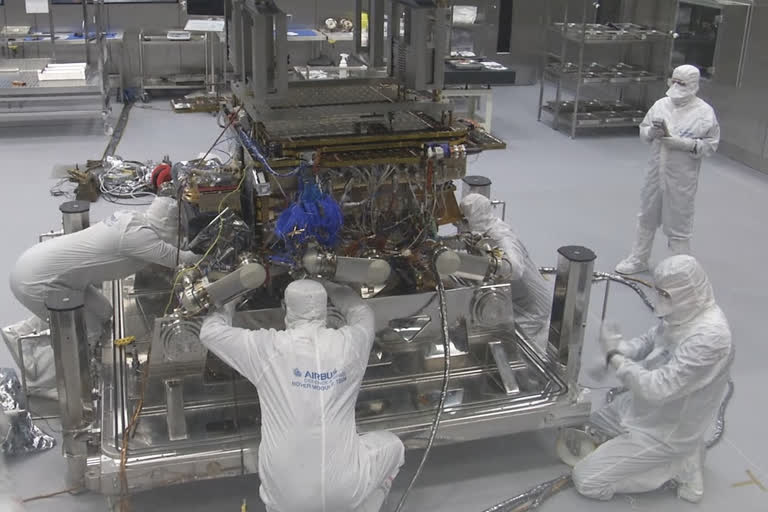Stevenage: In an Airbus clean room, engineers gave the finishing touches to 'Rosalind Franklin', the European Space Agency's 2020 ExoMars rover. The aerospace company has completed assembly of the rover, a vital stage in its path to the Red Planet, at its facility in Stevenage.
ExoMars is a joint mission between the European Space Agency (ESA) and Russia's Roscosmos that plans to land on the Red Planet in March 2021 after a nine-month trip.
Named 'Rosalind Franklin' after the late British DNA pioneer, the six-wheeled rover is equipped with a drill that can burrow up to two metres into the Martian surface.
It will sample soil, analyse its composition and search for evidence of past or present life hidden below.
ExoMars manager, Pietro Baglioni said, "We have been doing tests to prove the functionality of all the mechanisms and the instruments onboard and all tests are successful so far. So, we feel that finally, we have a machine built ready to operate on Mars."
The Martian atmosphere gives organic material a little protection from the Sun's radiation, so scientists believe that they can find evidence of past or present life below the surface.
The rover is built to look for signs of present and past life on Mars. Also to characterize the environment, to perform a lot of science, but the main focus is really to get signs of present and past life on Mars.
Scientists have perfected the rover's design, including its autonomous navigation system.
This will help it to travel between sites of interest much more quickly than by being driven remotely from Earth.
Lead systems engineer on the ExoMars project, Paul Meacham said, "The rover needs to be able to essentially figure out where is safe and where is not. There's no self-writing capability on this rover. If it was to attempt a rock that was beyond its capabilities, it would flip over and that would be the end of mission."
